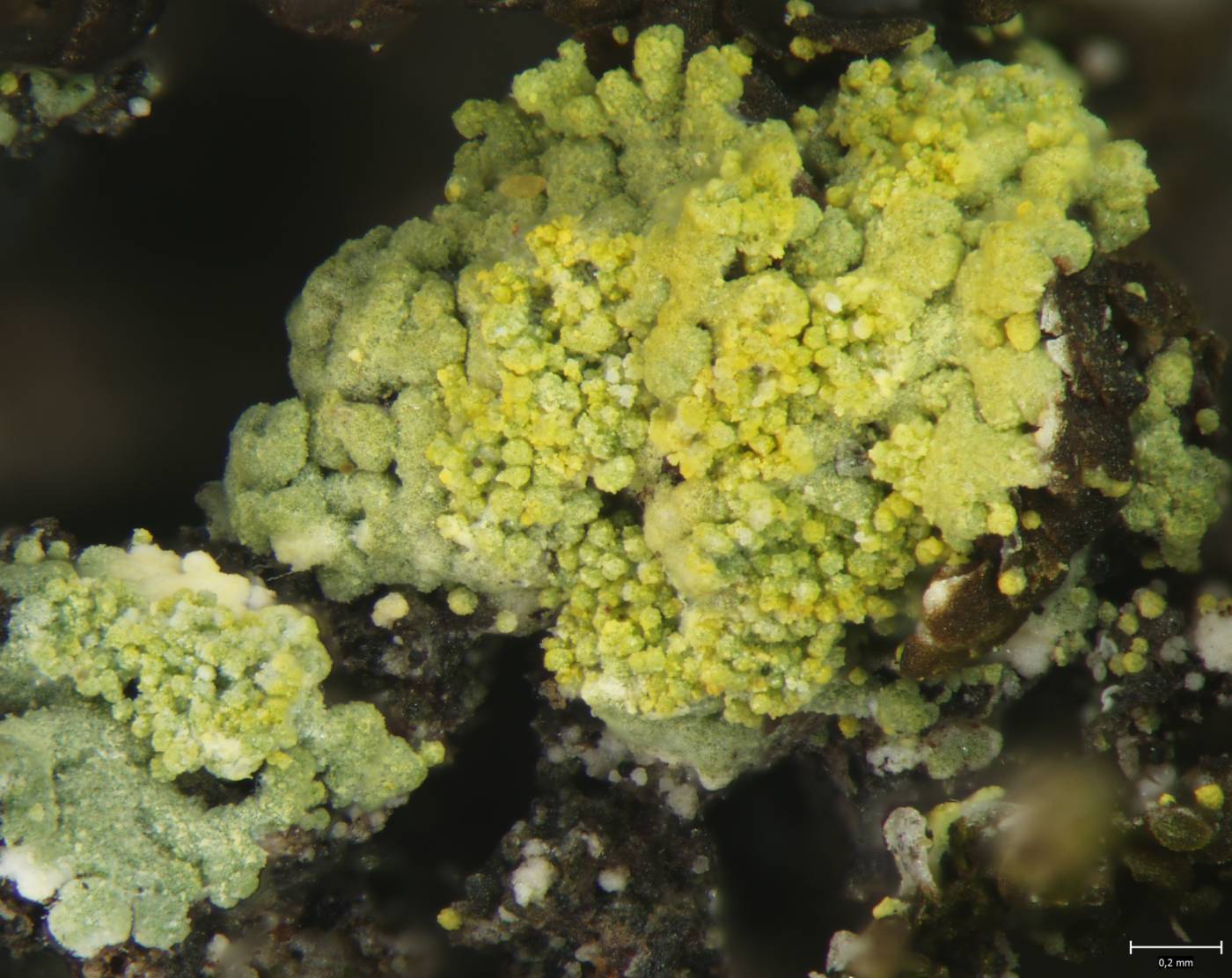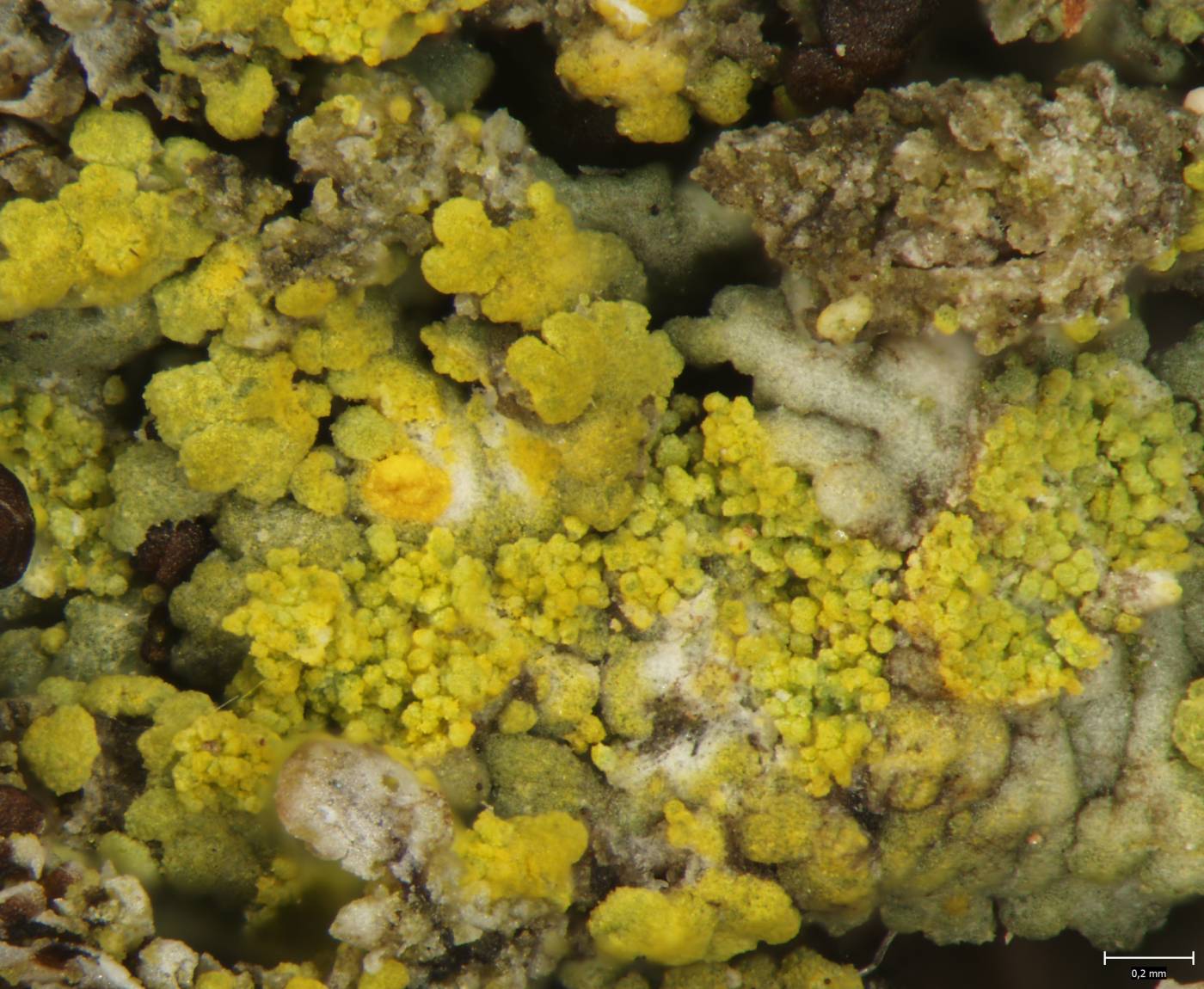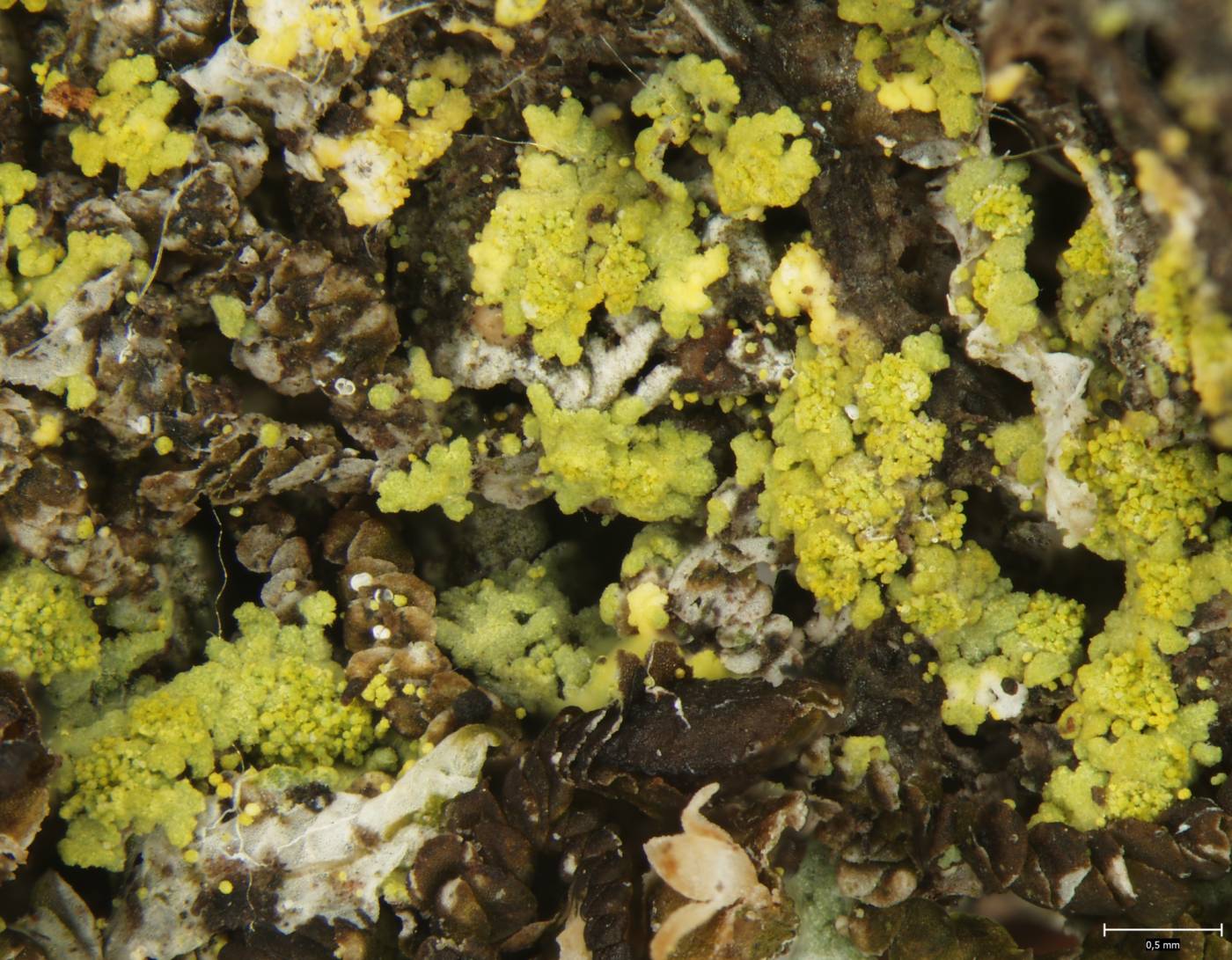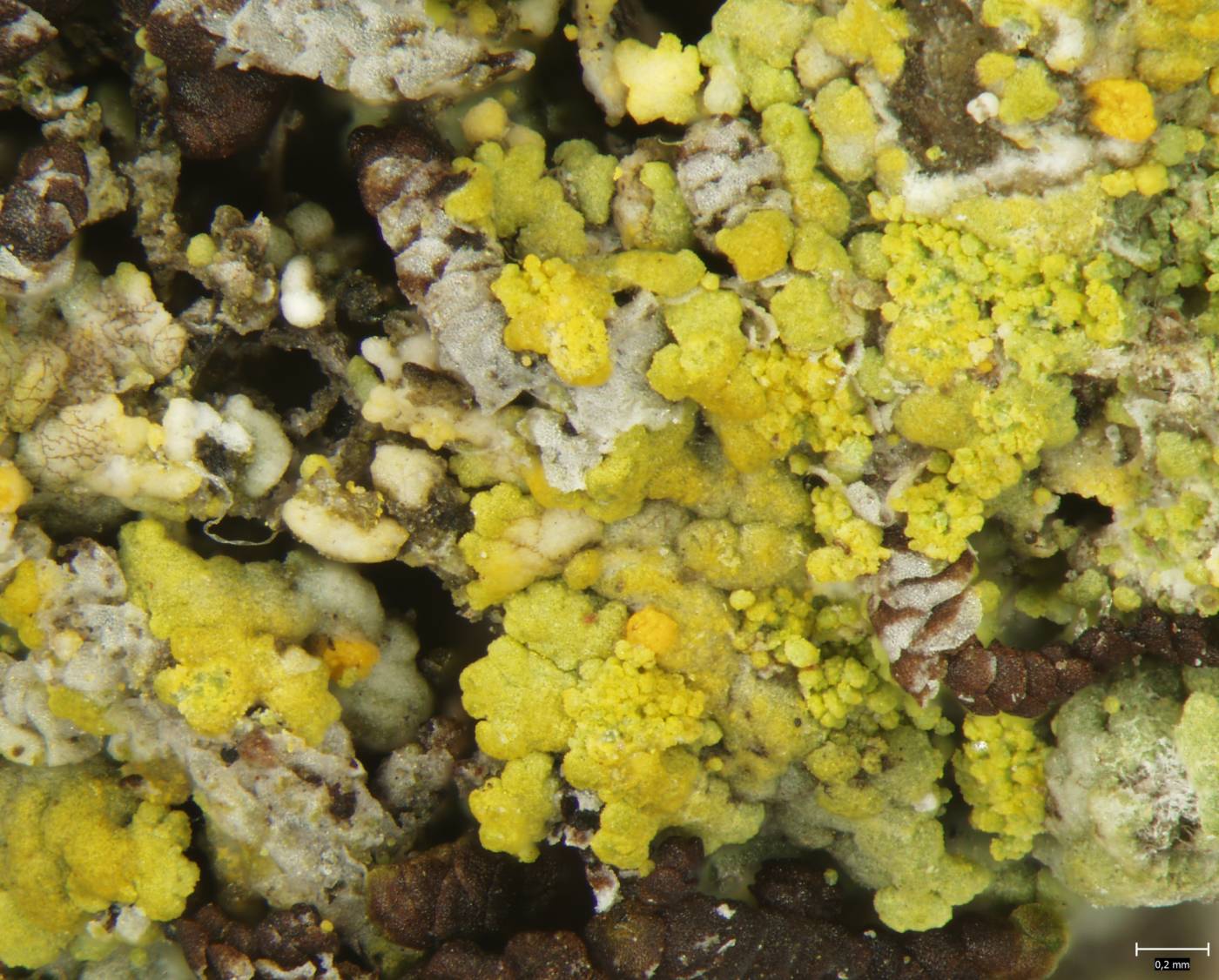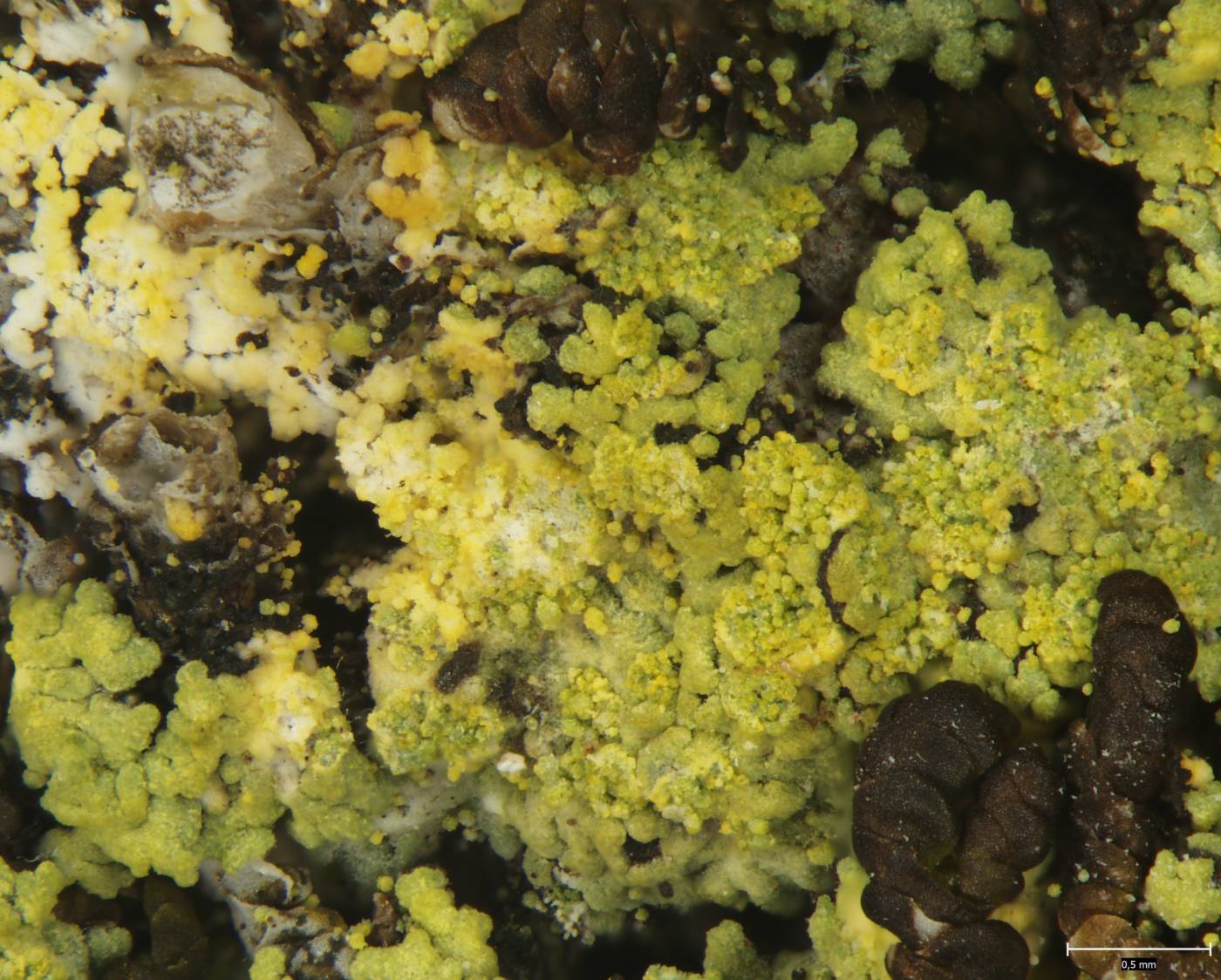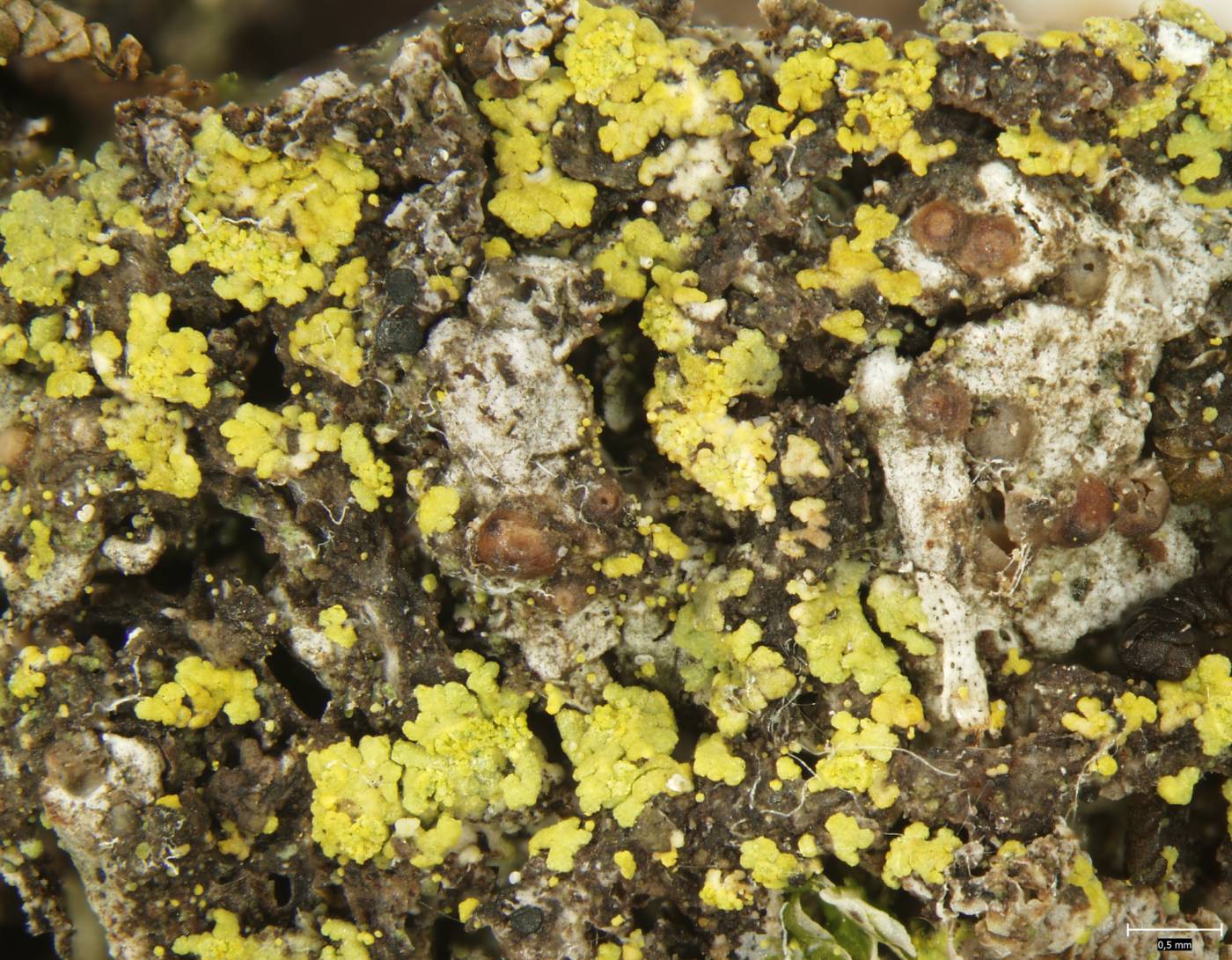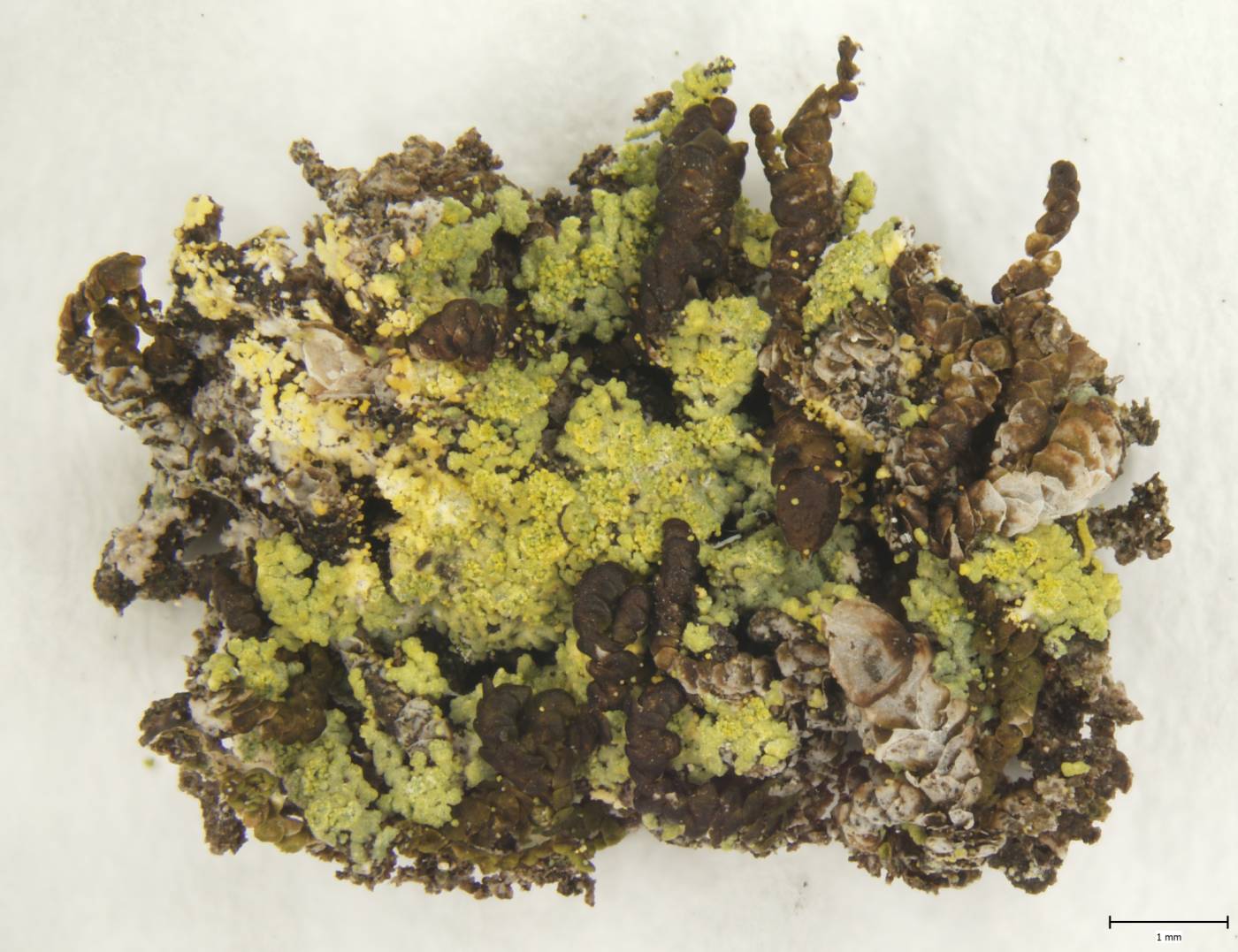In Czech lichenological literature, countless records of this taxon can be found from the Czech territory. Under the current concept, however, the great majority of them refer to C. efflorescens, C. pulchella and C. rubrisoli, which are collectively treated as C. efflorescens agg. True C. reflexa is characterized by large areoles (up to 0.6 mm), sometimes forming rosette-like thalli, large soredia (40–70 μm), and large biatorine apothecia 0.3–1.3 mm in diameter (though these are formed only rarely). Thallus colour is variable but is often more greenish compared to other sorediate species.
Candelariella reflexa grows on bark with higher pH (elms, ashes, pears, etc.), which is often overgrown by bryophytes. However, it is not a typical component of strongly nitrophilous communities, unlike, for example, C. efflorescens. It prefers well-lit habitats such as tree avenues, parks, or open woodlands. In the Czech Republic it is rare, known from fewer than ten localities. In Europe it is widely distributed.
Literatura: van der Kolk H., Westberg M. & Malíček J. (2025): Morphological and molecular data support the distinction of four sorediate corticolous Candelariella species in Europe. – The Lichenologist 57: 144–165. Halda J. P., Kocourková J., Lenzová V., Malíček J., Müller A., Palice Z., Uhlík P. & Vondrák J. (2017): Lišejníky zaznamenané během 22. jarního setkání bryologicko-lichenologické sekce ČBS v Moravském krasu v dubnu 2015. – Bryonora 59: 1–23.
taxonomic classification:Ascomycota → Lichinomycetes → Candelariales → Candelariaceae → Candelariella
Red List (Liška & Palice 2010):NT – near threatened
Red List (Malíček 2023):C2 – strongly endangered
Occurrence in the Czech Republic
All records: 7, confirmed 7. One click on a selected square displays particular record(s), including their source(s).
